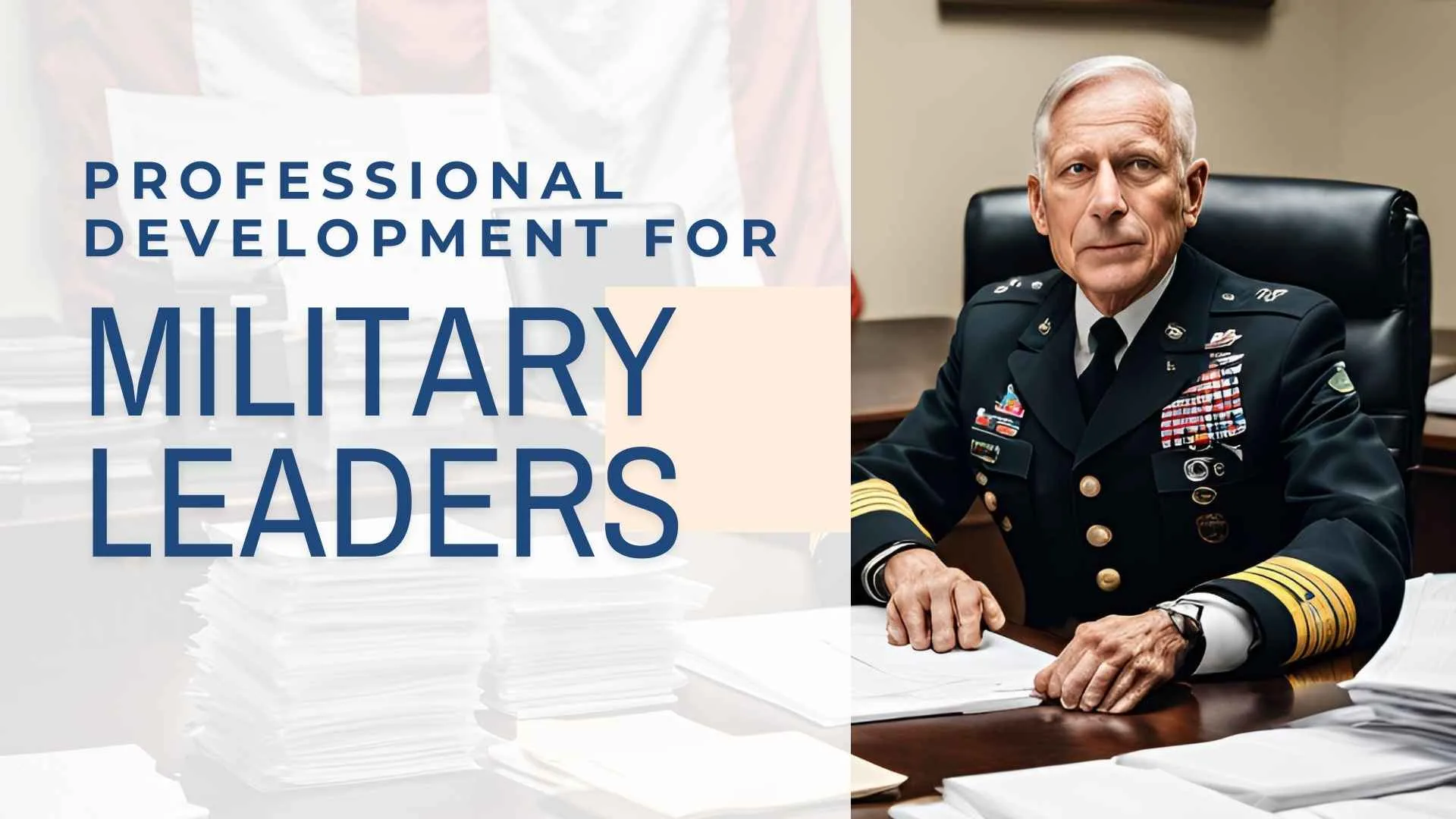I am thrilled to have been quoted in Forbes Magazine’s article on professional development, which explores strategies leaders can implement to nurture their teams in meaningful ways. Professional growth is a cornerstone of career satisfaction for military leaders and organizational success, and I’m excited to share a brief synopsis of the article’s key takeaways, with my own ideas on how to implement them for professional development for military leaders but recommend you also click the link to read the article in its entirety.
These practical and forward-thinking approaches can help leaders create a culture of learning and empowerment, ensuring their teams thrive in an ever-evolving workplace.

Professional Development for Military Leaders: 20 Strategies to Elevate Your Growth
In the fast-paced and evolving professional world, professional development for military leaders is not just a benefit—it’s a necessity. Whether transitioning from military service to civilian leadership roles or strengthening command in your current position, prioritizing development ensures you remain adaptable, confident, and prepared for any challenge. This guide outlines 20 practical strategies tailored to help military leaders excel in any environment, equipping you with the tools to lead with precision and purpose.
- Prioritize In-Person Training
In-person training is a cornerstone of professional development for military leaders. Workshops, leadership forums, and mentoring programs provide hands-on learning that aligns with both your expertise and organizational objectives. Budget for these opportunities to show a commitment to personal and professional growth. - Embrace Individual Growth Paths
Military leaders know the importance of adaptability. Growth is not one-size-fits-all. Empower yourself and your team to explore personalized paths that foster innovation, resilience, and confidence through challenges. - Share Responsibility for Growth
In the military, teamwork is the foundation of success. Similarly, professional growth thrives when leaders and their teams share responsibility. Provide resources and guidance while encouraging team members to take ownership of their development. - Understand the Needs of Your Team
Leaders who understand the aspirations and challenges of their teams are better equipped to guide their growth. Surveys, open forums, and one-on-one discussions ensure that development initiatives are relevant and effective. - Customize Development Plans
Effective professional development for military leaders includes personalized strategies. Tailor plans to align individual strengths and goals with broader mission objectives, ensuring development remains impactful and goal-oriented. - Dedicate Time for Growth
Mission demands can often take precedence, but leaders must carve out dedicated time for growth. Setting aside weekly blocks for leadership training or team-building ensures development remains a consistent priority. - Build Confidence and Resilience
Military leaders thrive under pressure. Develop training programs that focus on psychological resilience, problem-solving, and adaptability to enhance your ability to lead effectively in dynamic situations. - Actively Seek Input
Understanding what your team wants to improve is a vital step in development. Aligning individual goals with organizational needs fosters engagement and drives better outcomes. - Broaden Opportunities Beyond Promotions
Growth doesn’t always mean climbing the ranks. Lateral assignments, mentorship opportunities, and cross-functional projects provide valuable learning experiences that expand leadership capabilities. - Promote Collaborative Learning
Collaboration is a powerful tool for professional development for military leaders. Cohort-based learning, team workshops, and peer mentoring foster shared growth and collective expertise. - Pair Leadership Coaching with Real-World Challenges
Stretch assignments paired with expert coaching enable leaders to tackle complex scenarios while refining critical decision-making skills. This hands-on approach builds confidence and capability. - Explore External Learning Resources
Online courses, workshops, and leadership certification programs are excellent resources for military leaders transitioning to civilian roles or seeking additional skills to strengthen their command. - Establish Mentorship Programs
Structured mentorship programs are invaluable for professional development for military leaders. They foster connections, provide guidance, and ensure continuous growth through shared knowledge and experiences. - Integrate Growth Into Daily Work
Every task can be a learning opportunity. Reframe routine responsibilities as chances to develop new skills and enhance existing ones, keeping growth at the forefront of your daily mission. - Lead by Example
Military leaders inspire action through their own dedication. Prioritizing your own professional development sets the tone for your team, motivating them to follow your lead. - Foster Workplace Relationships
In both military and civilian roles, collaboration is critical. Encouraging mentorship and team-building strengthens bonds and promotes a supportive environment for growth. - Encourage Self-Reflection
Self-awareness is key to effective leadership. Regular reflection on your growth and actions provides clarity and helps identify opportunities for further development. - Focus on Tactical Development Opportunities
“Heat” projects and leadership rotations offer valuable experiential learning. These tactical assignments prepare leaders to handle complex, real-world challenges with confidence. - Enhance Strategic Thinking
Strategic thinking is critical for military leaders navigating complex missions or civilian transitions. Encourage your team to develop this skill to foster adaptability and innovation. - Create a Culture of Continuous Growth
Organizations led by military leaders who value learning attract top talent and excel in execution. Embedding a growth mindset into your leadership ensures long-term success for your team and mission.

